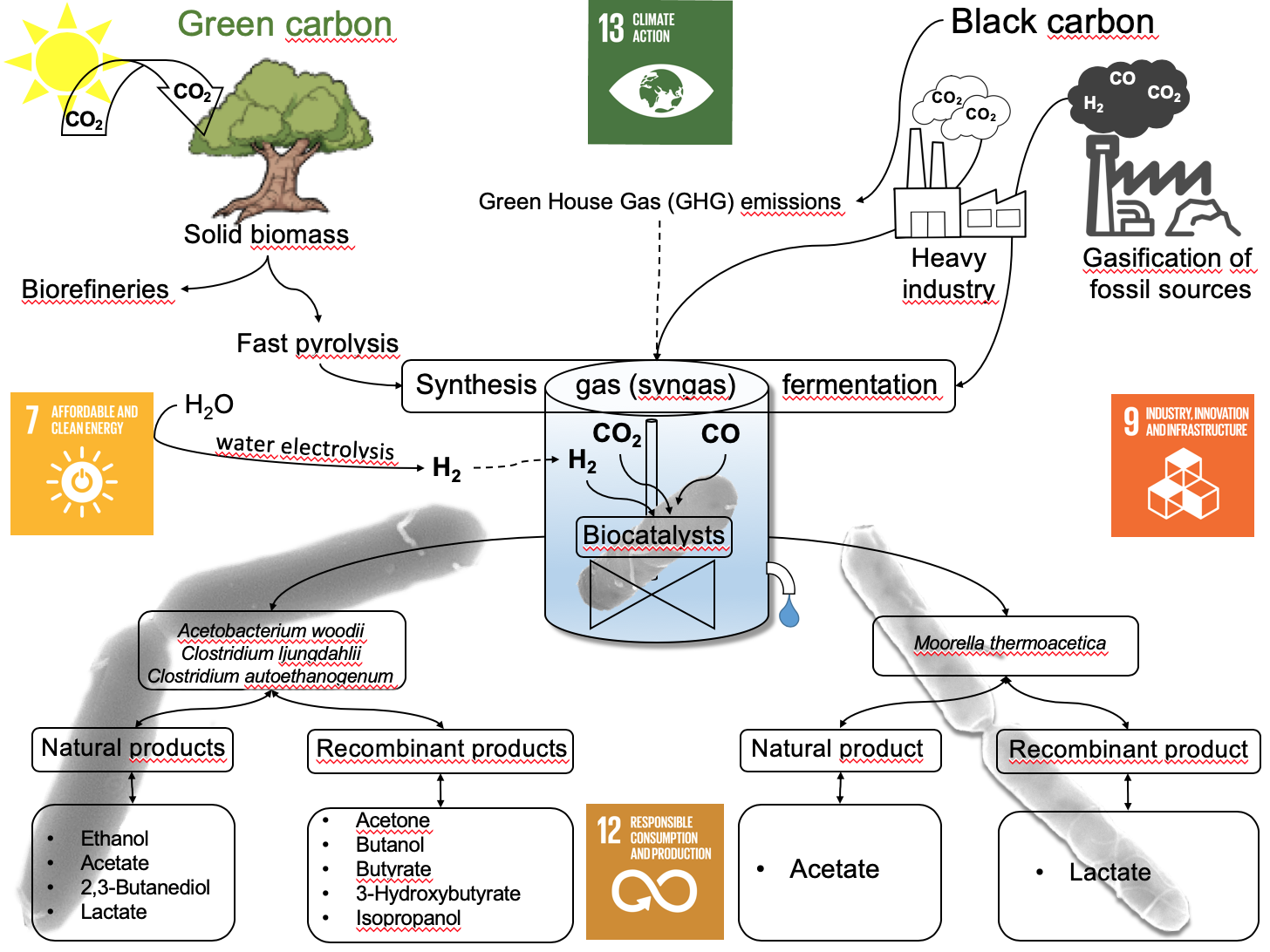Dr. Frank Bengelsdorf
I work as a permanent research associate at the Institute for Molecular Biology and Biotechnology of Prokaryotes at the University of Ulm. My group has extensive knowledge of physiology and metabolic regulation in obligate anaerobic bacteria. Currently I am working on the following three lines of research.
Metabolic engineering of the acetogenic bacteria Acetobacterium woodii and Clostridium ljungdahlii
Reducing CO2 emissions is one of the most pressing imperatives to mitigate the impacts of climate change. Microbial utilization of CO2 offers a sustainable solution for manufacturing chemicals without the use of fossil fuels. Acetogenic bacteria use the so-called Wood-Ljungdahl pathway for their anaerobic growth and form e.g. acetate, butyrate, butanol, ethanol, hexanoate, hexanol, lactate or 2,3- Butanediol as metabolic products (see figure). Acetobacterium woodii and Clostridium ljungdahlii are important model organisms. I often work with comparative physiological and genomic analyzes of different acetogenic bacteria, as they enable the deduction of new hypotheses regarding their metabolism. These hypotheses are tested by constructing corresponding recombinant strains in order to gain new insights.
Synthetic co-cultures of anaerobic bacteria
In nature microorganisms live in complex communities, and their members often engage in metabolic symbioses that can be mutualistic, commensalistic, or parasitic. In a project funded by the DFG (CarpoSyn), we focus on the cell-cell interaction of two anaerobic bacteria. The aim of CaproSyn is the knowledge-based realization of an optimized synthetic co-culture of a genetically modified A. woodii and the wild-type strain of Clostridium drakei. A. woodii cells produce lactate and acetate from CO2 + H2 and C. drakei cells consume the lactate to produce butyrate and hexanoate. This concept can also be transferred to various other acetogenic bacterial strains (possibly with modified production properties), which are then combined with other microorganisms to expand the product range.
Microbiology of anaerobic biogas reactors
In this line of research, I am concentrating of microbial communities in anaerobic biogas reactors converting various substrates into methane. Plant residues, food waste and animal excrement are used to generate energy in many parts of the world. In order to make these heterogeneously composed waste materials usable, they are fermented under anaerobic conditions, whereby biogas is produced. The biogas, which consists largely of carbon dioxide and methane, can be used for cooking and heating, but also for the decentralized generation of electrical energy. In particular, I am interested in identifying "key player microbes". Here we succeeded in the isolation and characterization of a previously unknown anaerobic caproate-producing bacterium. This bacterium was named Caproicibacter fermentans and is the only species in this genus that has been officially described and recognized so far.
My research projects were or are funded by research funds from the BMBF (Federal Ministry of Education and Research), the FNR (Fachagentur Nachwachsende Rohstoffe e.V.) and the DFG (German Research Foundation).


Kontakt
- frank.bengelsdorf(at)uni-ulm.de
- Tel. Büro: +49 (0)731 50 22715
- Tel. Labor: +49 (0)731 50 22716
- Fax: +49 (0)731 50 22719
- Büro: M23/2412
- Labor: M23/335
